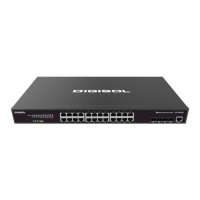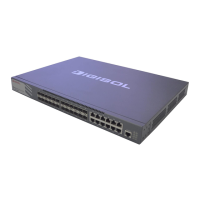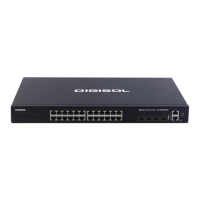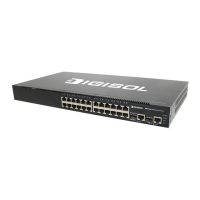DG-GS1528HP User Manual
3.1.3. Power over Ethernet (PoE) Considerations
For PoE switch models, consider the following information:
Devices considered a Power Sourcing Equipment (PSE), can support up to 30 Watts
per PoE port on port 1 to 4 and 15.4 Watts per PoE port on other ports to a Powered
Device (PD).
Ports 1-24 provide PoE power supply functionality with a maximum output power up
to 30W each port. This can supply power to PDs such as internet phones, network
cameras, wireless access points. Connect the switch PoE port directly to the PD port
using a network cable.
When connecting switches capable of supplying PoE, consider the following
information:
•
Switch models with PoE function are PSEs. These models are capable of
supplying DC power to attached PDs, such as VoIP phones, IP cameras,
and wireless access points (APs). PoE switches. Additionally, PoE switches
are capable of detecting and supplying power to pre-standard legacy PoE
Power Devices. Due to the support for legacy PoE, there is a possibility
that PoE switches acting as a PSE may inadvertently detect and supply
power an attached PSE, including other PoE switches. This false detection
may result in a PoE switch operating improperly and unable to supply
power to attached PDs.
•
The prevention of a false detection can be easily remedied by disabling
PoE on the ports that are used to connect PSEs. Another simple practice
to prevent a false detection is to first power up a PSE device before
connecting it to a PoE switch.
•
When a device is falsely detected as a PD, disconnect the device from the
PoE port and power recycle the device with AC power before reconnecting
it to the PoE port.
3.1.4. Starting the Web-based Configuration Utility
This section describes how to navigate the web-based switch configuration utility.
Be sure to disable any pop-up blocker.

